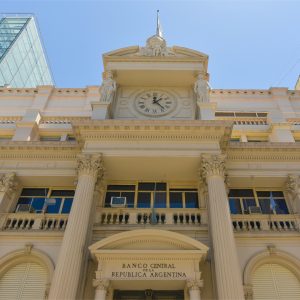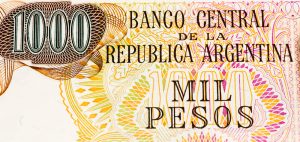Now bitcoin can provide economic researchers a new tool for exposing both currency manipulation and capital controls, in a way never thought possible before due to a lack of a perfect benchmark. This is done using similar methods to those arbitrage traders employ, comparing prices in different cryptocurrency markets around the world.
Also Read: Cobinhood Delists Six Tokens Susceptible to Pump and Dump, Limits Tether Pairs
Using the Bitcoin Price as a Global FX Bechmark
 While many countries claim to have a floating exchange rate – letting the free market set the value of their national fiat in relation to other currencies – in practice virtually all central banks interfere to try and influence FX markets to some degree. Unofficial measures used by economists to track and measure such effects, such as international comparisons of the prices of gold and oil or the famous Big Mac Index, suffer from various problems making them far less than ideal. According to new research by economist Gina Pieters, PhD, presented at the Royal Economic Society’s annual conference in March 2018, Bitcoin provides researchers with the ability to detect central bank manipulations and reveal the existence of capital controls. This can be done by creating an effective rate from many cryptocurrency exchanges to compare deviations from a country’s official fiat currency exchange rate.
While many countries claim to have a floating exchange rate – letting the free market set the value of their national fiat in relation to other currencies – in practice virtually all central banks interfere to try and influence FX markets to some degree. Unofficial measures used by economists to track and measure such effects, such as international comparisons of the prices of gold and oil or the famous Big Mac Index, suffer from various problems making them far less than ideal. According to new research by economist Gina Pieters, PhD, presented at the Royal Economic Society’s annual conference in March 2018, Bitcoin provides researchers with the ability to detect central bank manipulations and reveal the existence of capital controls. This can be done by creating an effective rate from many cryptocurrency exchanges to compare deviations from a country’s official fiat currency exchange rate.
Her study explains that the standard data sources used to detect manipulations have several shortcomings: they are expensive to obtain, they can be two or three years old, and, depending on the source, they may be unreliable or infrequent. The new research demonstrates that the bitcoin price data can circumvent these shortcomings. It also shows how distortions can be corrected as well as how to normalize the data from the noisy cryptocurrency market.
The Argentinian Example
 The new study looks at a number of cases across the world, but mainly focuses on the currency market in Argentina. The Argentinian central bank dropped the peso’s peg to the US dollar in December 2015, but local newspapers published an unofficial rate (Dólar Blue) before that, offering an opportunity to back-test the bitcoin rate. The Dólar Blue deviated considerably from the official exchange rate under the peg, but the constructed Bitcoin exchange rate “clearly moves with the behaviour of the Dólar Blue exchange rate.”
The new study looks at a number of cases across the world, but mainly focuses on the currency market in Argentina. The Argentinian central bank dropped the peso’s peg to the US dollar in December 2015, but local newspapers published an unofficial rate (Dólar Blue) before that, offering an opportunity to back-test the bitcoin rate. The Dólar Blue deviated considerably from the official exchange rate under the peg, but the constructed Bitcoin exchange rate “clearly moves with the behaviour of the Dólar Blue exchange rate.”
The researcher says that this methodology can be applied to other economies where the unofficial exchange rate is unknown. “Before access to Bitcoin-pricing data such results would be slow, difficult or impossible to construct. The results of this study provide a new tool with which to detect the presence of capital controls.”
What other interesting research subjects should bitcoin economists focus on? Share your thoughts in the comments section below!
Images courtesy of Shutterstock.
Do you like to research and read about Bitcoin technology? Check out Bitcoin.com’s Wiki page for an in-depth look at Bitcoin’s innovative technology and interesting history.
The post Research: Bitcoin Exposes Central Banks’ Currency Manipulation and Capital Controls appeared first on Bitcoin News.
Powered by WPeMatico

